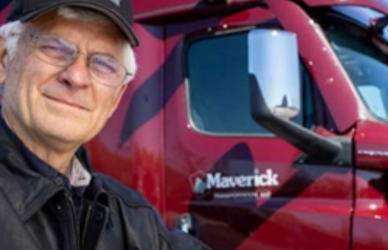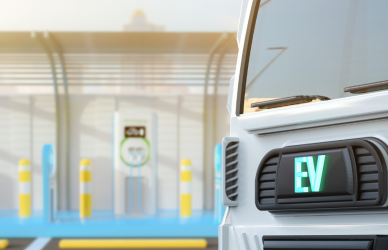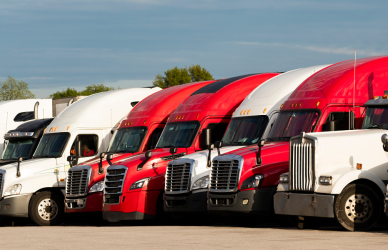At the Northwest Arkansas Tech Summit held in Rogers on Nov. 1, Craig Harper, Vice President and Chief Sustainability Officer at J.B. Hunt, addressed the audience with insights on electric vehicles as part of a broader discussion on the associated challenges and concerns.
“Just because something appears to be better for the planet does not necessarily mean it is,” he said.
Since 2016, Harper has been deeply engrossed in exploring the realm of electric and autonomous vehicles. During his presentation, he shared a video showcasing cobalt miners in the Democratic Republic of the Congo, emphasizing the critical role of cobalt in the production of batteries for electric and autonomous transportation. Harper noted that while cobalt may appear environmentally beneficial, it doesn’t necessarily guarantee sustainability.
“We have to be educated about all forms of energy today, understand where it comes from and what its by-products are and impact on people around the world,” Harper said. “There’s been a ton of progress made since 2016, but we still have many challenges as technology is ahead of infrastructure and also policy in many cases. [While there are challenges I] can’t wait to have more zero-emissions trucks. We have five of those today (at J.B. Hunt), and drivers love them. You don’t smell like diesel; they are quiet and powerful, but there are problems. You don’t have the range that is one-fifth of what diesel provides. It also weighs more, and it takes longer to charge. It costs three times as much as a diesel rig, and if you can find a charging station and it is working.”
Research revealed that a significant 21% of charging stations are out of operation at any given time, as reported by J.D. Powers.
“With all of those issues, we have policy coming that will require electric vehicles, and we will see where all this shakes out,” Harper said. “We are applying for the power we will need to fuel these vehicles. That’s why I learn all I can about access to clean and reliable energy.”
Nations aiming to meet their climate targets and energy security objectives by 2040 will need to invest in the addition or replacement of millions of miles of transmission lines, amounting to an estimated annual cost of around $600 billion, according to the International Energy Agency,
“We have to get more electricity around the world, but it’s confusing to understand which way we should go,” Harper said. “That’s why we have gathered all the information we can. Before we make some bold statement or get on the bandwagon to cut off one energy source, we need to understand that the whole world needs more energy, some just to improve their daily lives, others to power their plants and operate their infrastructures. The world needs more, not less.”
The aging infrastructure of power plants in the United States is notable. The average age of power plants is approximately 29 years, with coal plants averaging 45 years, natural gas-powered plants at 22 years, and nuclear plants at 39 years. In 2022, renewable energy sources like wind, water, solar, biomass, and geothermal contributed 21.5% of the total electricity generated in the U.S., with nuclear at 18.2%, coal at 19.6%, and natural gas at 39.8%.
“No one wants to do with less,” Harper said. “We have to find a way to be more sustainable around the globe, across our companies and households. When you dig into the sources of electricity, it’s easy to see fossil fuels still play a critical role in supplying the energy we need. As we look at clean alternatives, we also have to keep what we already have. Fossil fuel engines are going to be around for some time yet.”
Harper emphasized the importance of considering the energy expended during production and leaving a cleaner carbon footprint. Despite the perception that electric batteries are a green solution, they may not be as environmentally friendly as one might assume.
Highlighting issues such as limited range, increased weight, and downtime for recharging, Harper expressed concern that transitioning to electric trucks could necessitate expanding the number of trucks required to perform the same tasks.
Large charging stations, he noted, can charge up to 200 trucks simultaneously but often require backup generators to meet freight demand, sometimes operating three days a week.
“We also can get caught up with what we are going to have and lose sight of what we have today,” he said. “In intermodal, we can help shippers get a 60% reduction in carbon emissions per shipment. We are a large player in the intermodal logistics space and continue to move more customers to this mode when they are looking for a greener solution… [Toyota has] a promising technology that uses less cobalt and charges faster with a range of nearly 700 miles for a passenger car they are close to releasing.”
“There will be a commercial truck version coming later, and that holds promise. Harper said EV and hydrogen cell options each hold promise, but there has not been any big shift in either direction. I welcome the greener solutions. We are investing in all of them and staying close to the fuel providers that have served us for many years, as I don’t think they will sit still and let others take market share. They will be the first to move with hydrogen cell fueling or electric charging when there is substantial advancement in one direction.”
Source: The Trucker











